A Lucky Moment In Time
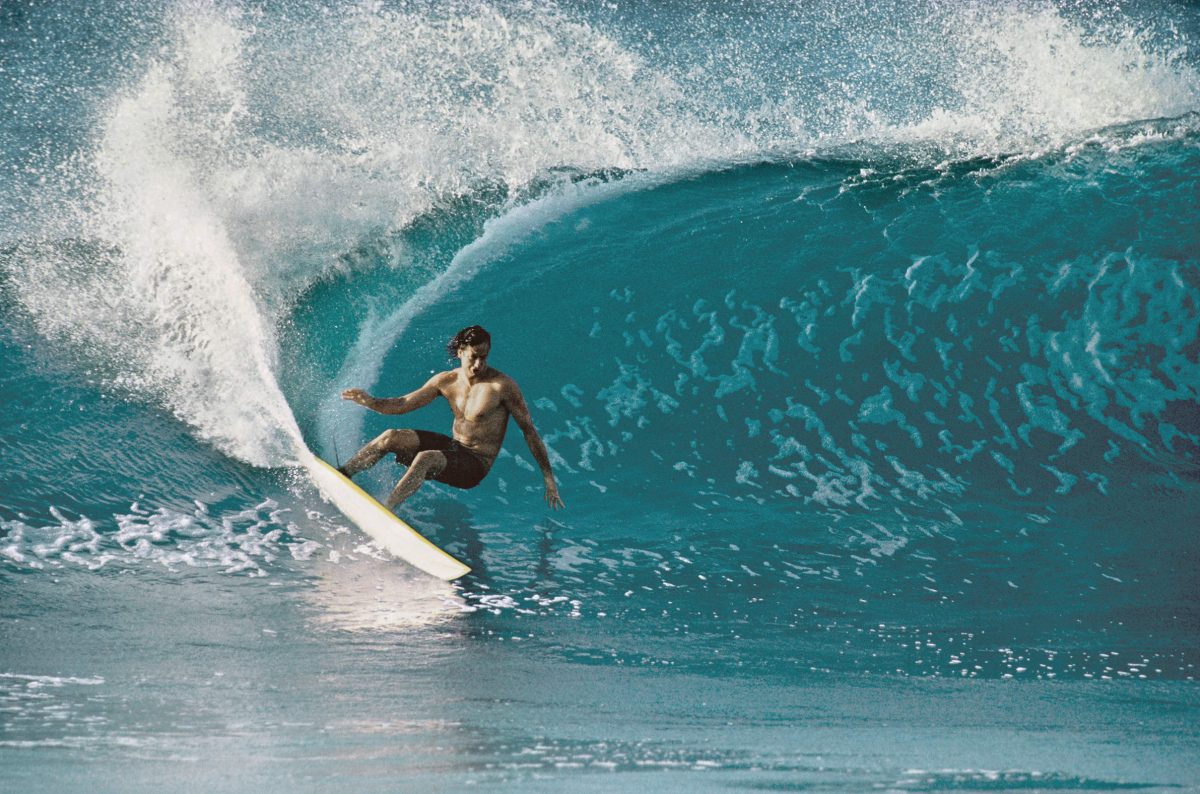
During the final months of 1991 Tom Servais captured two images that remain the best known Pipeline photos ever taken. One, of Australian Tom Carroll, came during the height of pro competition with hundreds watching. The other, of American Tom Curren, unfolded in the fading light of afternoon with few people around. Servais explains the circumstances surrounding the images and why they still resonate with surfers more than a quarter century later. Servais, now 65, is at Pipeline this winter for the 37th time, in search of more such moments.
Interviews conducted by Dan Fitzpatrick
The moment: Tom Curren, from Santa Barbara, decides to surf one November afternoon in 1991. He catches a wave at Backdoor, the name given to the section of Pipeline breaking from left to right, and cuts back in the direction he had been traveling. Click here for a view of the entire 15-frame sequence.
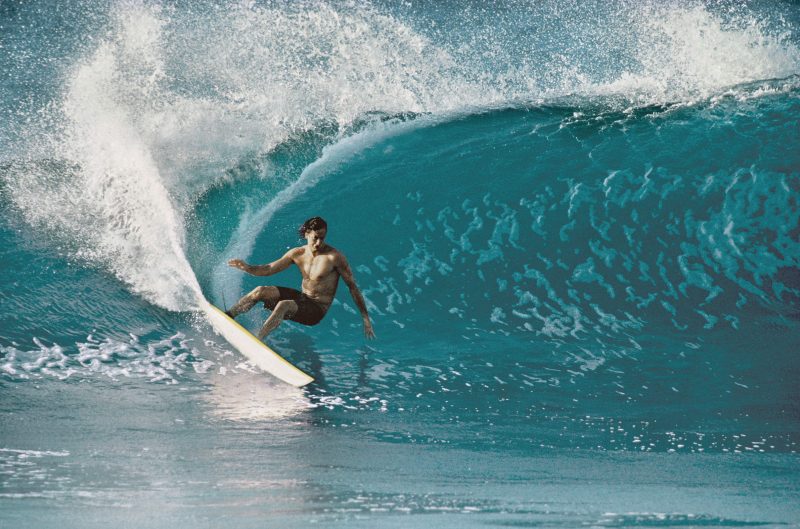
Tom Curren in November 1991
The surfer: Tom is one of the most stylish, smoothest surfers ever. His body parts are doing exactly what they need to do without any arm waving or any theatrics of any kind. It all seemed to come together in that photo. He was kind of shy. Trying to get photos of him was hard because you never knew when he would show up. He might go surfing one hour before dark and the light was getting bad. He tried to avoid the cameras.
The board: He was riding a board without any logos on it which also made it super cool. The board he is riding is called a Reverse V. He had two of those surfboards, one was 7’ 3’’ and one was a 7’8’’. They were Maurice Cole surfboards. Maurice Cole is an Australian shaper. He lived in France for lot of years. Tom Curren’s first wife was from France and Maurice Cole was living there at the same time. I believe that’s how that union started.
The set up: In the morning it was one of those days they call 6 to 8 foot, which is pretty big surf for Hawaii. It started getting windy and everybody left and it seemed like it was done. I remember taking a drive up to another surf spot called Haleiwa that is real good on west swell. It wasn’t very good. A couple hours later on the way back to North Shore I stopped at Backdoor and had another look at it. It was 3:30 or 4 o’clock. The conditions were good so I just grabbed my stuff and ran down and set up. It wasn’t like I went down to the beach with Tom Curren and said hey let’s go shoot. I just happened to go down there and he just happened to be there.
“I saw that photo and I said ‘wow that looks really good.’”
The camera: I shot with Canon cameras. Nikon had come out with this 600 millimeter lens that everyone thought was a really good lens. I had an adapter that made it sit on my Canon. I was shooting Kodachrome 200 film because I liked how it looked in backlit conditions. It was a manual focused lens and manual exposure. With digital you have a lot more latitude and you can look at the photo on the back of the camera and can take test shots. Back in the film days it was experience and a little guess work.
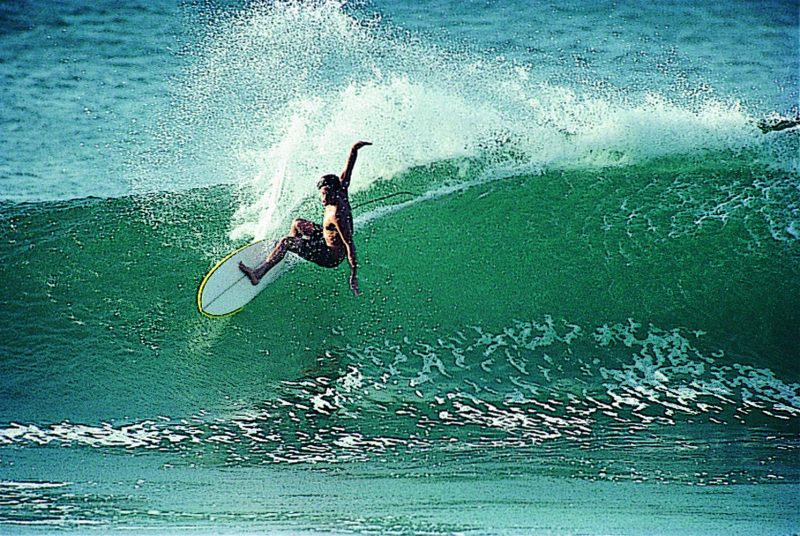
The frame immediately before the famed cutback.
The ride: It’s not that unusual for (surfers) to come out of a tube and see a nice shoulder and do a turn like that. As a photographer we always liked it when they finished off the wave with a dramatic maneuver. The first thing I remember about that photo is not so much shooting it but when I got the slides back and I opened up the box and I was looking through it and I saw that photo and I said ‘wow that looks really good.’ A couple other photographer friends were there. I could tell they thought it was special too. A lot of surfers have said that was the most beautiful cutback every done. His style is perfect, the turn is perfect and it’s smooth. It’s just a lucky moment in time.
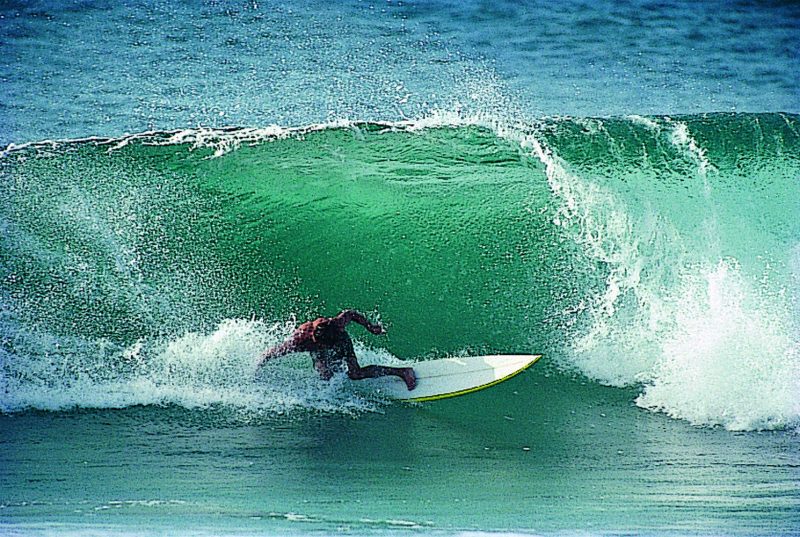
The frame immediately after the cutback. See here for the entire 15-frame sequence.
The aftermath: There were a couple people who got that photo. One of them was out of focus. Another guy had a different angle down the beach. It was never on the cover of Surfer magazine at the time. It would be except the magazine did not want to upset the advertiser. His main sponsor at the time was (Ocean Pacific) and without logos on the board they thought if we put this on the cover we will piss off the sponsors. This photo just seems to have gathered more and more momentum as time has gone on. There is no photo of mine that has gotten more attention. Just a couple years ago I finally saw a video of the ride. It’s over in three to four seconds and the turn at the end happened so fast. I feel super lucky I got that photo.
The moment: Pipe Masters, semifinal, December 1991. Tom Carroll, from Sydney, Australia, takes off on a 10 to 12-foot wave moving right to left. His board is pink and his helmet is black. Instead of riding Pipeline’s tube horizontally, as most surfers do, Carroll snapped his board and turned along Pipeline’s formidable wall of water.
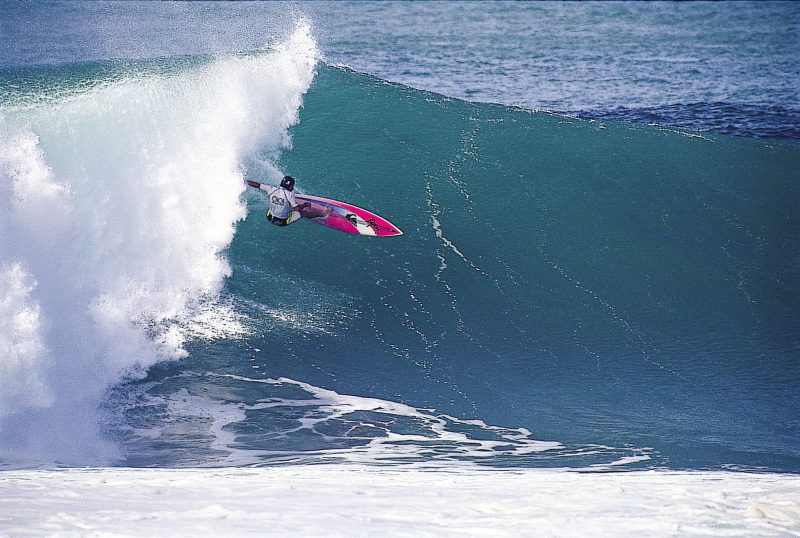
Tom Carroll: “The Snap.” Photo: Tom Servais
The surfer: I had already been friends with (Tom Carroll) at that point. I had met him in the early 80s. Surfer magazine always got a house on the North Shore and he happened to be staying in the house next door to us. He is just the most polite, nicest guy and very sincere and I was always drawn to that. We all wanted to shoot photos of Tommy Carroll. He was like the Kelly Slater of his time. He was just a fantastic surfer and he was very photogenic and he was very good on the North Shore of Hawaii which is the real proving ground for surfers because the waves are so thick and powerful and challenging. He wore a helmet because he hit his head on the bottom. He just felt like ‘I value my brains.’ It’s very shallow and people have died surfing out there.
The board: It was one of his favorite boards, shaped by a famous North Shore shaper named Pat Rawson.
“The whole beach was like ‘oh my god did you see that turn?’”
The set up: You can pretty much shoot anywhere you want on the beach at Pipeline as long as you don’t sit in front of someone who wants to kill you if you do. I like to be in front during a contest. I get down to the beach at 6 a.m. or so. It’s not my style to show up on beach late and just go ‘hey I’m a photographer man I am going to set up in front of you, sorry to block your view.’ I was one of the first people down on the beach for sure. Pipe Masters only runs for 3 or 4 days every winter and all of the best surfers are there. The day of the Super Bowl the photographers don’t show up late.
The camera: I had a Canon camera. It was more than likely the very same camera (responsible for the Tom Curren photo) with the manual focused lens. We didn’t have auto focus yet. Everything was manually focused.
The ride: I remember that maneuver very clearly. He did a very hard turn in a very vertical, critical spot on the wave. When he did that turn the whole beach was like ‘oh my god did you see that turn’? A lot of surfers would try to do a turn in that part of the wave and they would fall off and lose control. They used to have a nickname for it: they called it The Snap. It was more than a snap; it was a big power turn but people refer to it as The Snap. We all knew it was something great.
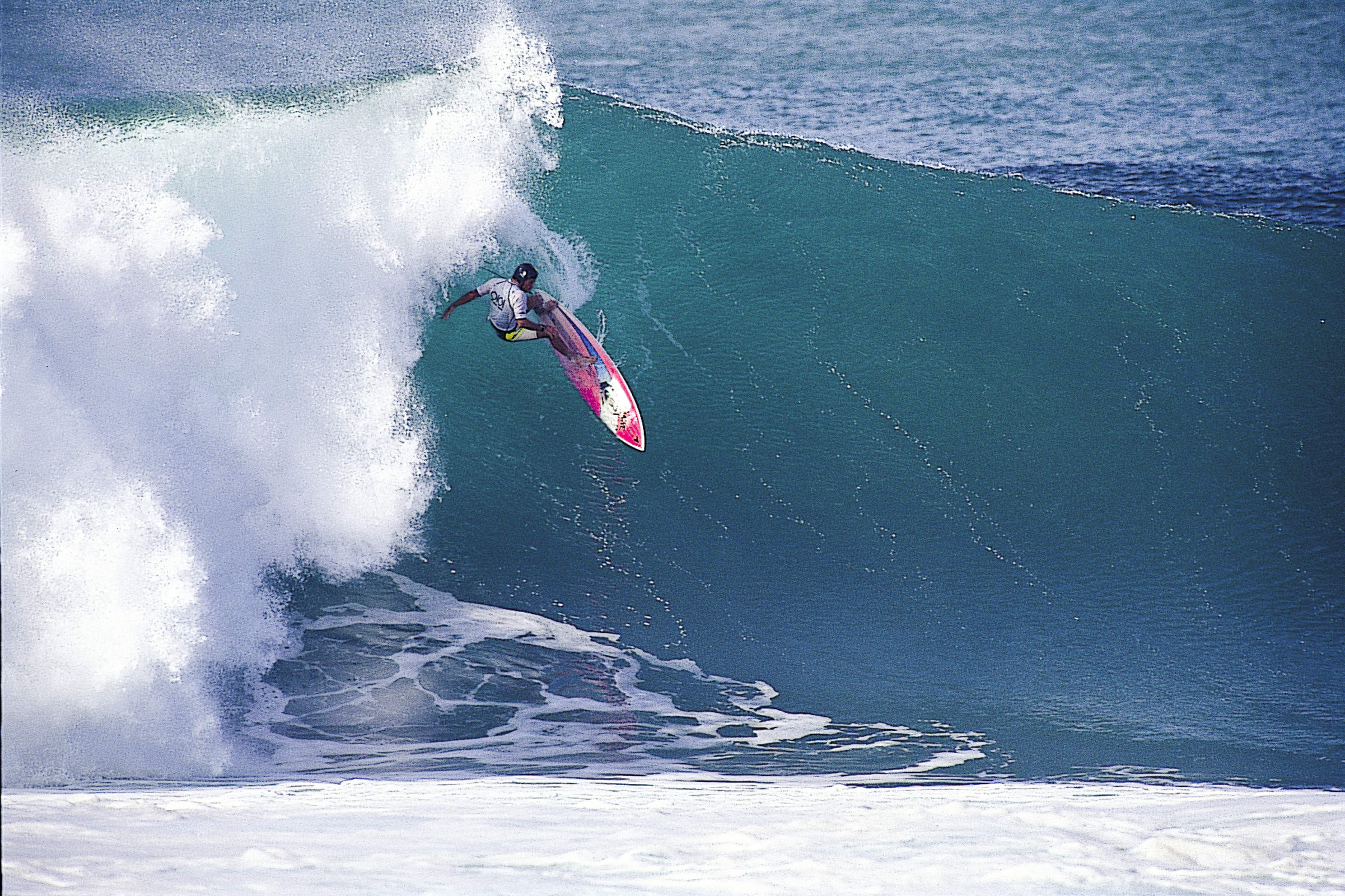
Tom Carroll: “The Snap,” a frame later. Photo: Tom Servais
The aftermath: I would never say I have the best version of that photo. I know of 2 to 3 other versions. Jeff Divine shot it, another guy from Australia named Peter Wilson, nicknamed Joli, he has a version of it. That photo to me is more about that turn than the actual photo. I am glad I have that photo and it’s a historical photo but not so much a historical photo as it was a historical surfing maneuver by Tom Carroll. That one turn is the most explicit example of his type of surfing at Pipeline. He did turns at Pipeline no one else has ever done.
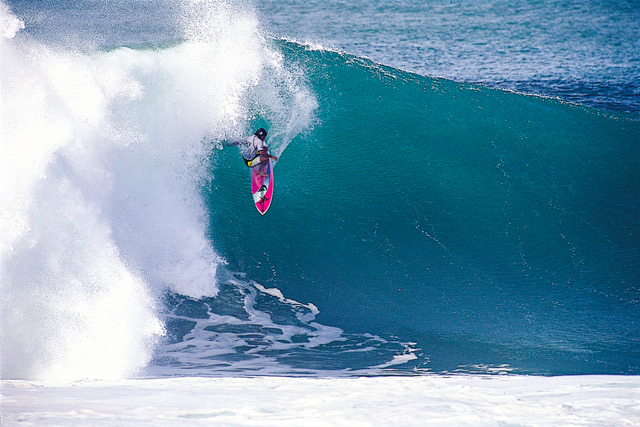
Tom Carroll: “The Snap,” two frames later. Photo: Tom Servais